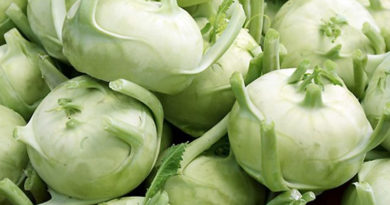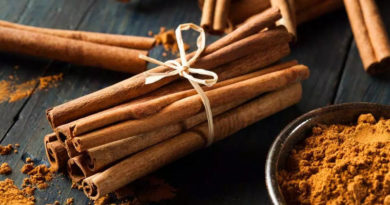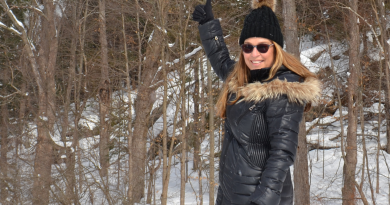Autism Detox Diet “Miracle”
By Sari Huhtala
A year has passed since the day Jenne Zaccheo watched her then four-year-old son burst into giggles and take off running in the park to join a handful of other youngsters playing amongst the jungle gym. Seems like natural behaviour for a kindergartner, but for an autistic child – who at one point would not even make eye contact, let alone engage in activities with other children – this simple act was nothing short of a small “miracle.” And it all unfolded a mere week after Zaccheo embarked on a daily heavy metal detox smoothie routine for her son.
“We would go to the park every day and he would never want to play with the other children,” Zaccheo says. “A week after starting the detox we went to the park and he ran and joined in with the other children. You can’t even imagine how wonderful it was; this feeling of hope that I had.”
Zaccheo’s quest to help her son Raymond was sparked after reading actress Jenny McCarthy’s story of how she healed her own autistic son.
Raymond was two years old at the time and had just been diagnosed with autism. In Turlock, California where they reside, the county offers applied behaviour analysis (ABA therapy) for autistic children directly in the home environment, beginning at age two. ABA therapy is a form of positive reinforcement every time the child displays positive behaviour, she explains. The therapist began spending three to four hours a day with Raymond.
In their county, a child cannot be assessed for autism or diagnosed until the age of two, despite a parent’s suspicion the child is not meeting developmental milestones, Zaccheo says.
She says she noticed a change in his behaviour after he received his MMR vaccination two weeks after turning one.
“I knew something was wrong probably around age one,” Zaccheo says. “When we would call his name it was like he didn’t hear us and he wouldn’t make any eye contact. Around two years old children should have around 20 words, but he had zero words and barely made any noises. He would get very angry and start banging his head into the wall or the floor, thrashing about.”
Once Raymond was diagnosed, Zaccheo began to spend endless hours researching the Internet for alternative solutions to help her son heal.
It was there she spotted McCarthy’s story of healing her own son’s autism, which was rooted in dietary changes, with an emphasis on a gluten-free diet.
There was little doubt this was an area that called for attention, Zaccheo recounts. In fact, the nutrition-focused journey to help her son heal would become a saving grace for even Zaccheo,
who had long suffered from chronic strep throat, hormonal problems and skin issues her whole life.
“I ate very poorly back then. I ate Taco Bell and McDonalds every day. I would go to the dollar store and buy a box of cookies and just eat them all. I know now that’s a very bad idea, and if you have a child they are picking up these habits, whether you realize it or not.”
When Raymond was two years old she began dietary changes, eliminating all gluten from his diet, and day by day making small changes that would boost his nutritional uptake through foods.
“My son wouldn’t eat anything that wasn’t a cookie or chicken nuggets,” she remembers.
A finicky palate is not out of the ordinary for an autistic child, she says. They typically have an aversion to fruits and vegetables, and different textures of foods, which is why it can be a challenge for parents to introduce healthier food options.
“When he was one and a half he would take broccoli into his mouth and chew it like he was enjoying it, but then spit it all out, like he couldn’t eat it, but he loves broccoli now.”
Following McCarthy’s advice for fussy palates, she introduced Raymond to zinc supplementation, breaking open zinc capsules and pouring half a capsule into his orange juice in the mornings. Careful with zinc, though, she warns, because it can build up in the body it is only recommended for short-term use.
She discontinued its use after one month.
“There’s something magical about zinc,” Zaccheo says. “McCarthy says it helps children with autism accept new foods.
“A month after giving him zinc I noticed his stomach was much less bloated and he was eating better; it was like it helped his
taste buds.”
Zaccheo herself began zinc supplementation and noticed that food tasted better. Now she only gives Raymond zinc if he falls ill since it acts as a great flu buster.
Eliminating gluten while continuing the ABA therapy led to profound results in Raymond’s behaviour, she recalls.
“He stopped banging his head when we eliminated gluten from his diet, almost immediately, and we took out all the processed foods from his diet. At one point I was worried he was going to suffer brain damage because he would be banging his head so hard and thrashing about.”
It may take her a few attempts when introducing new foods to Raymond, and sometimes innovative thinking, but eventually he warms up to the idea. She sneaks avocado into meals like potatoes, cauliflower and rice noodles, and keeps culinary secrets to herself.
“He loves cauliflower rice, but he thinks it’s risotto. He doesn’t know that it’s cauliflower. Whenever I’m giving him new vegetables I sprinkle vegan parmesan cheese on the veggies. The first time he eats a new vegetable I say ‘Look there’s cheese on it,’ and he says ‘OK,’ and it always works. Then the next time he doesn’t even need to have cheese on it.”
Intrigued by the healing power of foods, two years ago Zaccheo enrolled in a program to become a holistic health practitioner. It was there an instructor introduced her to Anthony William’s book Medical Medium.
Armed with information, she forged ahead with further dietary changes.
“We were trying not to give Raymond much sugar, even avoiding excess natural sugars from fruit, but Medical Medium talks about the importance of fruit sugar for brain health,” Zaccheo says. “We were also trying to emphasize animal protein and then realized that plant protein should be a focus. There’s one to two grams of protein in almost every fruit and those sources of protein are complete proteins. In a banana there are 2.9 grams of protein.
“I try to incorporate as much fruit as possible into his diet. He loves fresh orange juice and oranges are really good at pulling heavy metals from the body, and so is cauliflower.”
The Medical Medium chapter on autism spurred her on to embark on a heavy metal detox for Raymond a year ago – and that changed everything, she says.
“I immediately saw some positive things happening,” Zaccheo says. “Before, I would talk to him and he wouldn’t even look at me. I noticed a difference even on the first day; he started making eye contact.
“While we noticed a difference eliminating gluten and making dietary changes, doing the heavy metal detox brought it to a whole new level.
“We noticed his speech improved. Before he started the detox smoothie he could string together one to two words at a time, like ‘juice please.’ Once we started this detox program he was putting five to six words together. I thought to myself ‘Is this really happening?’”
Medical Medium’s heavy metal detox smoothie calls for a blend of blueberries, cilantro, fresh orange juice, spirulina, barley grass juice powder and dulse. Zaccheo omitted the dulse.
Convincing an autistic child to gulp down a detox smoothie daily is not for the faint of heart, but like anything else in life, persistence, along with flexibility, has its rewards.
“I tried so many different things to get him to drink the detox smoothie and after about the tenth try he did,” Zaccheo says. “You have to be persistent and decide even though it didn’t work today we’re still going to try again tomorrow. You really have to have a good attitude. Your child’s probably not going to be happy, but you have to stay calm. Your child, especially autistic children, will pick up on your energy.”
Tune into your child’s individual likes and dislikes and make adjustments according to their needs, she advises. Although Raymond enjoys blueberries in muffins and oatmeal, he can’t seem to stomach them in a smoothie, Zaccheo says.
“He just won’t do it, so I found the solution was to juice the wild blueberries, along with the cilantro,” she says.
Actually, her version of the detox smoothie maintains all the ingredients without the smoothie feel.
She mixes the spirulina and barley grass juice powder into warm water and then blends it into the blueberry/cilantro juice. Raymond eats a whole banana first, while sipping away at fresh squeezed orange juice. She then pours the blueberry juice into his mouth – a little over a half a cup of liquid – using a square cup to avoid spillage and to ensure it pours directly into his mouth, and he chases it down with orange juice.
Let’s face it, he doesn’t exactly like taking the heavy metal detox drink daily, she says, but creative communication goes a long way.
“I tell him this juice is going to make your tummy happy and your brain happy. Everything I say to him he totally gets. After he drinks it he says, ‘Mommy, tummy feel good.’”
As a cautionary note, start with low doses of spirulina and barley grass juice powder, she says, speaking from experience.
At first attempt, Zaccheo added adult doses – one teaspoon of each of the two powders – to Raymond’s smoothie, but it became clear the detox was too intense, she says, as it resulted in emotional meltdowns – symptoms of his body detoxing.
“He would get so upset and start crying and screaming and turning red,” Zaccheo says. “I immediately knew that it was too much of a detox for him, so I scaled it back to only a quarter of a teaspoon of each powder, which was much better.”
She also gave him small doses of CBD oil, which she noticed helped him calm down. CBD oil, which comes from the cannabis plant, has calming and anti-inflammatory properties, without the THC. The brain of an autistic child has inflammation, so CBD oil can help reduce the inflammation, she adds.
“It also helps him sleep better. Sleep is a huge part of health. If you’re not sleeping, you’re not healing.”
She also gave him an alcohol-free lemon balm tincture in his juice daily to help calm him.
“Anytime I give him anything I start with very small doses,” she adds. “(Online) I follow these parents with toddlers who are giving the detox smoothies in very small quantities.”
Six months ago, to speed up the healing process, she upped the dosage of spirulina and barley grass to half a teaspoon, and continues to do the heavy metal detox protocol daily.
“Raymond naturally has a good sense of humour and he has a wonderful personality and it’s coming out now,” Zaccheo says.
“He’s being silly all of a sudden. He’s like a whole new kid.”
Till now, Raymond has been enrolled in a special education class at his school, but that is soon to change, she says.
“This past November during the IEP (assessment) meeting the teacher said he’s meeting all of his goals and in her 13 years of teaching he’s been the best student ever. The teacher recommended that in one to two years he be part of a mainstream class because of how well he’s progressing. It’s absolutely wonderful. When you have a child you find out is not healthy and you finally come to a light at the end of the tunnel and you see a positive outcome, it’s a wonderful feeling.”
In December Zaccheo graduated as a holistic health practitioner, celebrating her son’s milestones, along with her own. Having embraced all of the nutritional changes herself, her own health has turned around, with issues of strep throat, skin and hormonal problems a thing of the past.
Her newfound well-being gives her the armour to manage day-to-day life as a mom of an autistic child, she says.
“If you don’t have good health, what do you have? It should be a number one priority for you, especially if you have kids and you want them to have the best life possible. We take care of our outside world, but what about the inside? (Parenting) actually becomes easier when we take care of ourselves nutritionally because we have the energy and are able to better deal with things when we are healthy.
“Unfortunately there are parents who aren’t willing to do the work and it breaks my heart.”




